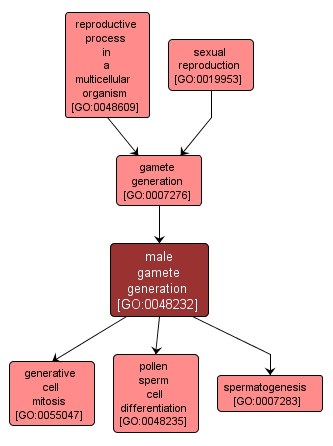GO TERM SUMMARY
|
| Name: |
male gamete generation |
| Acc: |
GO:0048232 |
| Aspect: |
Biological Process |
| Desc: |
Generation of the male gamete; specialised haploid cells produced by meiosis and along with a female gamete takes part in sexual reproduction. |
|

|
INTERACTIVE GO GRAPH
|














